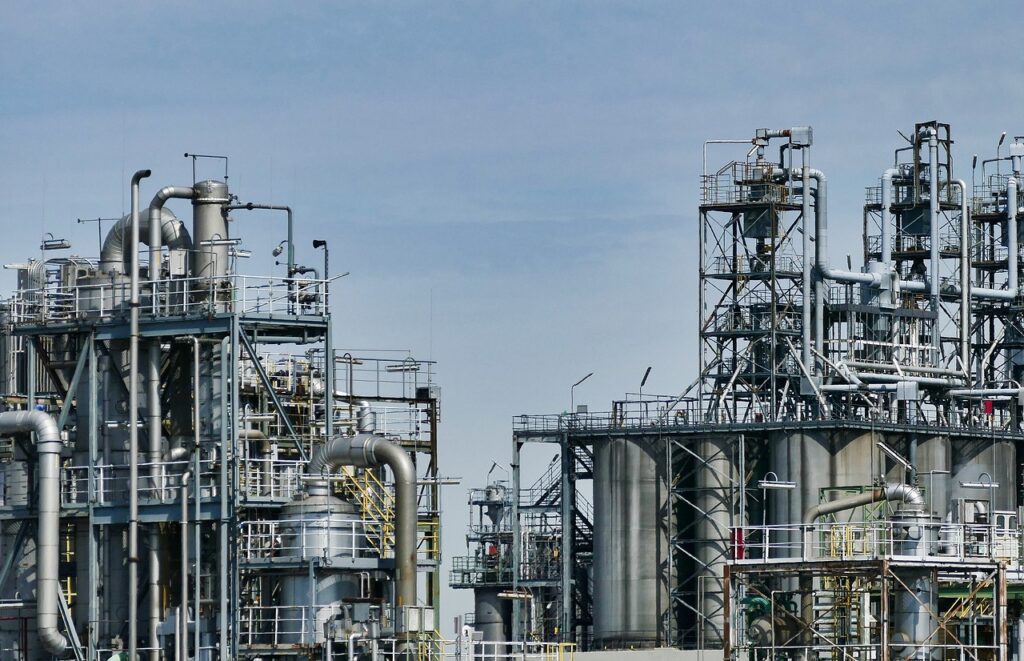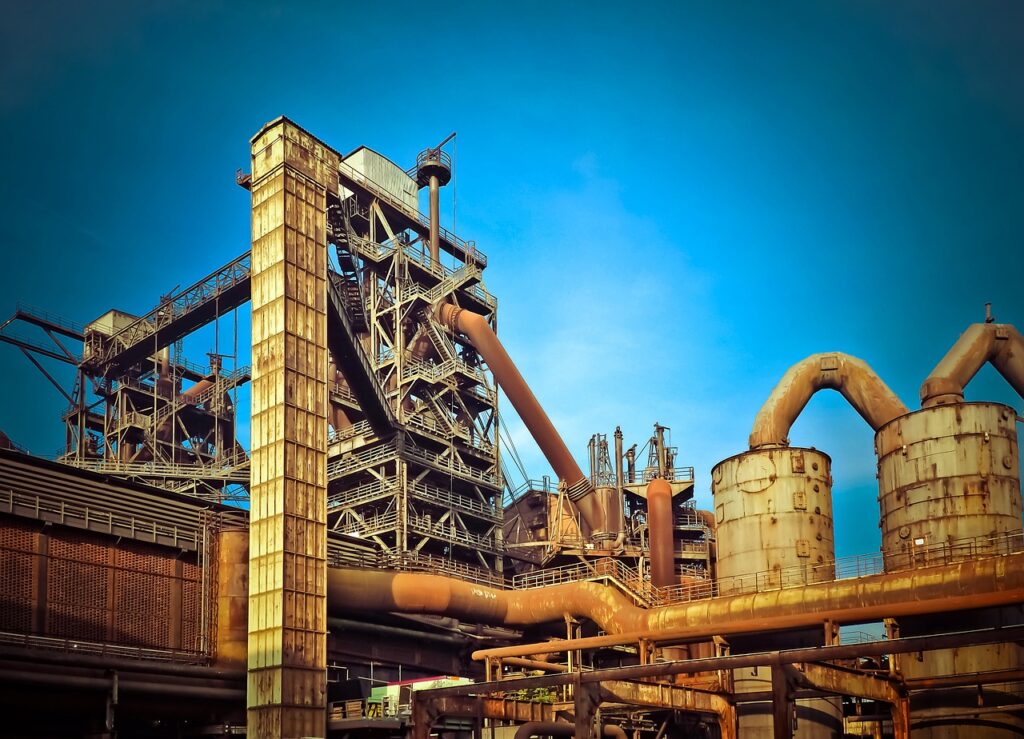Sulfuric acid, often referred to by its chemical formula H2SO4, is one of the world's most widely used chemicals. It plays an essential role in many industrial processes, from fertilizer manufacturing to pharmaceutical production, environmental and safety concerns, and metal processing. This strong mineral acid is also known for its corrosive properties and potential hazard to human health. Understanding the nature of sulfuric acid, its physical and chemical characteristics, and its uses is fundamental to appreciating its importance in modern industry. This first part explores the statistical formula and structure of sulfuric acid, as well as its unique properties that explain its versatility in various fields.
1. Understanding sulfuric acid (H₂SO₄)
The statistical formula and molecular structure of H₂SO₄
Sulfuric acid, with the chemical formula H₂SO₄, is a compound consisting of two hydrogen atoms (H), one sulfur atom (S), and four oxygen atoms (O). This compound is one of the strong mineral acids and is also called "hydrogen sulfate" due to the presence of sulfur, a key element in the molecule.
The molecular structure of H₂SO₄ is responsible for its chemical properties. In the molecule, the sulfur atom is at the center, surrounded by four oxygen atoms, forming a tetrahedral structure. Two of the oxygen atoms are single-bonded to the sulfur and each carries a hydrogen atom, which gives H₂SO₄ its acidic character by allowing the release of hydrogen ions (H⁺) in solution. The other two oxygen atoms are double-bonded to the sulfur, stabilizing the molecule and increasing its ability to react with other substances.
This particular molecular structure explains why H₂SO₄ is a very strong and extremely corrosive acid. When sulfuric acid is dissolved in water, it dissociates in two stages, successively releasing two protons (H⁺), making it a diprotic acid. This double release of protons is the basis for its strong acidity and its effectiveness in industrial processes, as it allows H₂SO₄ to react easily with many types of compounds, both organic and inorganic.
Physical and chemical characteristics of sulfuric acid
Sulfuric acid is a dense, colorless, oily liquid in its pure state. Due to its highly hygroscopic nature, it has a strong affinity for water and can quickly absorb moisture from the air. This property is widely used in industry, particularly for drying gases. Indeed, H₂SO₄ can easily capture water molecules present in gas mixtures, making it an effective desiccant.
Physical properties
At room temperature, pure sulfuric acid is odorless and colorless, but it can take on a brownish-yellow hue when it contains impurities. Its density is approximately 1.84 g/cm³, which is much higher than that of water, and this high density contributes to its workability and concentration as an acid. Its melting temperature is 10.4 °C, while its boiling point is around 337 °C, allowing its use in high-temperature industrial environments without the risk of excessive volatility.
Chemical properties
Sulfuric acid is an extremely strong acid, capable of readily releasing H⁺ ions when dissolved. Its ability to completely dissociate in water classifies it as a strong mineral acid. The reaction of dissolving H₂SO₄ in water is highly exothermic, producing a large amount of heat. This reaction must therefore be carried out with caution to avoid dangerous splashes due to the rapid boiling of the solution.
When diluted, H₂SO₄ can react with a wide range of substances, including metals, bases, metal oxides, and even some organic materials. For example, when sulfuric acid comes into contact with zinc or iron, it releases hydrogen gas, a reaction used in some industrial processes. Furthermore, due to its strong affinity for water, H₂SO₄ can decompose complex organic compounds by extracting their water molecules, a phenomenon used in organic synthesis and waste treatment processes.
Sulfuric acid, as an oxidizing compound, is also capable of reacting with reducing substances, which increases its potential in industrial applications.
2. Uses and role of H₂SO₄ in industry
The essential role of H₂SO₄ in industrial processes
Sulfuric acid is essential in many industrial processes due to its strong acidic nature and its ability to react easily with various substances. Used as a catalytic agent, chemical reagent, or for its cleaning properties, H₂SO₄ is essential for many industrial reactions. Its main use is in fertilizer production, where it is used to make essential compounds such as ammonium sulfate and calcium phosphate. In addition to fertilizers, sulfuric acid is crucial in the synthesis of various chemicals, particularly in the manufacture of more specific acids such as phosphoric acid.
In metallurgy, H₂SO₄ is used in pickling processes, where it removes surface oxides from metals, particularly steel, prior to treatment or plating. This ability to dissolve oxides makes H₂SO₄ a preferred choice for preparing metal surfaces, improving coating adhesion and extending part life.
Industrial applications of H₂SO₄
Sulfuric acid is used in many industrial sectors for various applications:
- Fertilizer manufacturing : Approximately 60% of global sulfuric acid production is used to manufacture phosphate fertilizers, such as calcium superphosphate and ammonium sulfate. These fertilizers are essential for agriculture, providing soils with nutrients needed for plant growth.
- Chemical industry : H₂SO₄ is essential in the production of other chemicals, including phosphoric acid, which is used in fertilizers, detergents, and some food additives. It is also used in the synthesis of many organic products, including dyes, surfactants, and pharmaceuticals.
- Metal treatment : In metallurgy, sulfuric acid is used for pickling metals. This process involves removing layers of metal oxides from the surface, thus cleaning and preparing the metals for plating, coating, or joining. This mainly applies to steel and ferrous alloys.
- Explosives manufacturing : Although less common, sulfuric acid plays a role in the production of certain types of explosives, where it acts as a nitrating agent to produce highly reactive compounds. This use requires strict supervision due to the associated risks.
- Battery industry : H₂SO₄ is also a major component of lead-acid batteries, particularly in vehicle batteries. It acts as an electrolyte, allowing ions to circulate between the lead plates and producing electricity. The concentration of sulfuric acid in batteries is precisely controlled to ensure their performance and durability.
- Petrochemicals : In petrochemicals, H₂SO₄ is used to catalyze certain hydrocarbon conversion and refining reactions. In particular, it is used to transform hydrocarbons into products such as gasoline or diesel, and is involved in the alkylation process for the production of cleaner fuels.
In short, sulfuric acid is a versatile raw material used in a wide range of sectors. This versatility makes H₂SO₄ one of the most important acids for modern industry, essential in the production of consumer goods and in industrial processing.

3. Health effects and dangers of sulfuric acid
Toxicity and risks to human health
Sulfuric acid is extremely corrosive and can cause serious injury if it comes into direct contact with skin, eyes, or the respiratory tract. H₂SO₄ can cause deep and painful chemical burns. Inhalation of its vapors can also cause severe irritation of the respiratory mucous membranes, leading to symptoms such as coughing, shortness of breath, and chest pain.
Sulfuric acid burns are particularly dangerous because they can rapidly damage skin tissue, requiring immediate medical attention. Prolonged or repeated exposure to H₂SO₄ vapors, even at low concentrations, can lead to chronic respiratory problems such as bronchitis and asthma. If H₂SO₄ gets into the eyes, it can cause irreversible damage or even blindness.
Symptoms of acute sulfuric acid exposure include:
- Severe irritation of the eyes and throat
- Skin burns, often accompanied by sharp pain
- Breathing problems, including difficulty breathing and chest pain
- A persistent cough and bronchial secretions
Protective measures and risk prevention
To protect workers and minimize the risks associated with handling sulfuric acid, several safety measures and personal protective equipment (PPE) are necessary. In both laboratory and industrial settings, these safety practices must be strictly adhered to to prevent accidents.
- Personal Protective Equipment (PPE) : PPE is crucial when handling H₂SO₄. Acid-resistant rubber gloves, safety goggles, and combined filter respirators (type E-P3) are essential to avoid contact with the acid. For prolonged handling or high concentrations, a full-face mask or self-contained breathing apparatus is recommended.
- Ventilation and handling areas : Sulfuric acid should be handled in well-ventilated areas, ideally under a fume hood, to limit inhalation of fumes. In industrial environments, suitable ventilation systems should be installed to remove sulfuric acid fumes.
- Emergency measures : In case of accidental contact with H₂SO₄, safety showers and eye wash stations must be available near work areas. Immediate washing with water is essential to minimize injury in case of skin or eye contact. It is also recommended to have neutralizing solutions available to treat small acid splashes.
These precautions are essential to reduce the risks associated with H₂SO₄. Indeed, uncontrolled exposure to this acid can have serious, even fatal, consequences for those affected. By adopting rigorous preventive measures, manufacturers and laboratories can ensure worker safety and minimize health risks.
Are you looking for an analysis?

4. How to analyze sulfuric acid?
Laboratory H₂SO₄ measurement techniques
Laboratories use precise techniques to analyze the concentration of H₂SO₄ in various samples, whether solutions, ambient air, or industrial emissions. Among the commonly used methods is ion chromatography , which can detect and quantify ions present in solutions with great precision.
For the analysis of H₂SO₄ in air, OSHA method ID-165SG is often applied. It involves collecting samples on specialized media, such as pre-cleaned TGS tubes, which capture acid vapors present in the air. The limit of quantification (LOQ) of this method is 7 µg per media, ensuring reliable detection even at low concentrations. This technique is particularly used in environmental monitoring to assess potential worker exposure and the impact of industrial emissions.
Online analysis and concentration measurements in industrial processes
In industrial environments, sulfuric acid analysis is also done continuously to monitor concentrations in real time. Online measurement technologies, such as the DSA 5000 analyzer , are widely adopted. This analyzer uses a combined method based on the measurement of density and sound velocity , two physical properties that vary depending on the concentration of H₂SO₄ in a solution.
The advantage of this technology lies in its speed and accuracy. In just three minutes, the DSA 5000 provides a concentration measurement with exceptional accuracy, without the need for prior sample preparation. In addition, this method is very economical, as it minimizes consumable costs, requiring only a small sample volume (approximately 3 ml) for each measurement. Results are immediately available, allowing operators to monitor and adjust dilution processes in real time.
For particularly high concentrations, specialized sensors, such as the DPRn sensor for density and the SPRn sensor for sound velocity, are used. These sensors are designed to withstand acidic media and can be integrated directly into industrial pipelines for continuous measurements. They ensure process stability and optimize production parameters depending on the required H₂SO₄ concentration.
In short, sulfuric acid analysis relies on precise methods adapted to the requirements of different sectors. Laboratory techniques offer optimal accuracy for spot checks, while online measurements ensure constant monitoring in industries, contributing to safe and high-quality production.

5. Standards and regulations for the analysis of H₂SO₄
Compliance with international standards
Sulfuric acid analyses carried out in laboratories are governed by rigorous international standards that aim to guarantee the accuracy and reliability of results, while ensuring the safety of all involved. Among the most commonly used standards are ISO 17025 COFRAC accreditations in France, which certify the technical competence of analysis laboratories. These standards ensure that the analysis methods, equipment used, and procedures followed meet the strictest quality and safety requirements.
US regulations, such as those issued by the Occupational Safety and Health Administration (OSHA) and the National Institute for Occupational Safety and Health (NIOSH) , set standard methods for monitoring air quality and sulfuric acid emissions in workplaces. These standards mandate specific methods, such as OSHA ID-165SG, to ensure reliable analyses appropriate for industrial conditions. In Europe, similar standards are in place to monitor and limit H₂SO₄ exposure levels, thus protecting worker health and reducing environmental impact.
Safety regulations for industrial use of H₂SO₄
To prevent risks associated with sulfuric acid, industries must comply with regulatory exposure limits that define the maximum permissible concentrations of H₂SO₄ in ambient air. In France, for example, occupational exposure limits (OELs) establish two exposure levels for H₂SO₄: the average exposure value (AEL) over eight hours and the short-term exposure limit (STL) for 15-minute exposures. These reference levels identify thresholds beyond which additional safety measures must be implemented to limit worker exposure.
In addition to exposure limits, regulations govern the storage and transportation of sulfuric acid, requiring corrosion-resistant containers and proper storage conditions. Industrial facilities must also have emergency plans and containment procedures in place in case of leaks or spills. Companies are required to train employees in the safe handling of H₂SO₄ and the use of personal protective equipment (PPE) to minimize the risk of accidents.
Compliance with these standards and regulations is not only essential to ensure safety in industrial environments, but also to avoid legal penalties and economic losses due to accidents. By ensuring rigorous monitoring and control of sulfuric acid, companies protect the health of their employees and their reputation, while complying with international and national regulatory requirements.
6. Environmental precautions and management of sulfuric acid emissions
Limiting sulfuric acid emissions into the atmosphere
In industries using sulfuric acid, H₂SO₄ aerosol and vapor emissions are rigorously monitored to comply with applicable environmental standards. Atmospheric sulfuric acid emissions can cause significant damage by contributing to the formation of acid rain, which leads to the degradation of soil, water bodies, and vegetation. These emissions can also affect air quality and pose a danger to populations living near industrial sites.
To reduce sulfuric acid emissions into the atmosphere, industrial facilities must be equipped with gas filtration and treatment systems. Scrubbers are commonly used filtration equipment to capture H₂SO₄ vapors and other acid gases. These devices use water or neutralizing solutions to absorb and neutralize vapors before they are released into the atmosphere. In addition, continuous monitoring sensors measure H₂SO₄ levels in emissions and provide alerts if authorized thresholds are exceeded.
Management of waste containing sulfuric acid
Waste containing sulfuric acid, whether from spent solutions or production residues, requires special management due to its hazardous nature. Acid waste treatment follows strict procedures to avoid the risk of soil and groundwater contamination. Direct dilution of H₂SO₄ in the environment is prohibited, as it could lead to severe acidification of natural environments, which is harmful to aquatic and terrestrial ecosystems.
Chemical neutralization methods are frequently used to treat waste containing H₂SO₄ before disposal. For example, sulfuric acid can be neutralized by adding a base (such as calcium or sodium hydroxide) to form environmentally safe salts, such as calcium sulfate. Once neutralized, the waste is taken to specialized treatment centers where it is tested to ensure it meets environmental safety standards.
In addition to neutralization, some industrial processes include the recovery and reuse of used sulfuric acid. This method is not only environmentally friendly, but it also reduces production costs by recycling the acid for other production cycles.
Environmental impact and prevention of ecological risks
The environmental impact of sulfuric acid is a major concern, particularly in regions where it is used extensively for industrial applications. Pollution caused by H₂SO₄ can have lasting effects on ecosystems, including acidification of soils and waterways. Furthermore, acidic aerosol particles contribute to the deterioration of infrastructure, resulting in high maintenance costs for communities.
To prevent environmental risks, industrial companies must adopt sustainable management practices, incorporating rigorous control processes, waste recovery, and emission monitoring. Implementing employee training programs on managing environmental risks related to sulfuric acid is also recommended to ensure compliance with standards and protect ecosystems.
These environmental precautions are essential to minimize the ecological footprint of sulfuric acid and ensure environmental protection. By following responsible management practices and enforcing applicable standards, companies contribute to the preservation of biodiversity and the prevention of risks for future generations.



